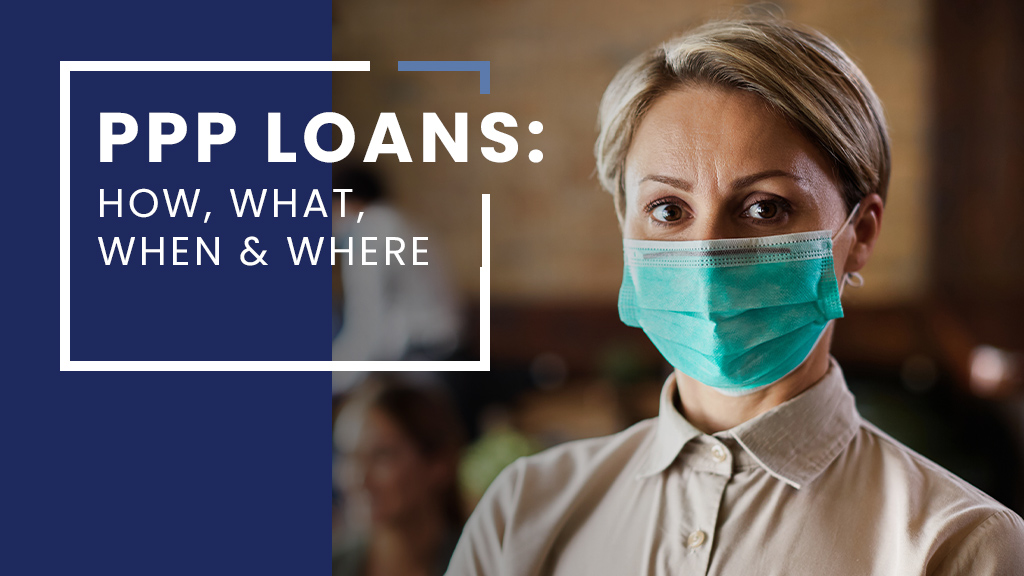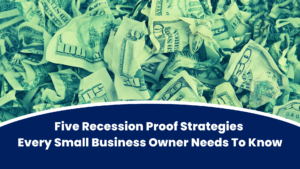Get an overview of how the PPP loan process works with small business owners who have gone through it.
Founders First Capital Partners has been holding webinars to help small business owners sustain their businesses during the COVID-19 pandemic. I recently moderated a panel that took a closer look at the Paycheck Protection Program (PPP) loans offered by the SBA. Our goal was to help small businesses understand the latest guidelines, processes, and best practices for securing a loan.
Our three panelists were small business owners who had been through the PPP process: Michele Courton Brown of Quality Interactions, Story Clark of TravelStoryGPS, and John Riley of Omnistruck.
I’ll highlight some key points I’d like to make from my perspective as a business founder, but you can also listen to a replay of the webinar on the Founder’s First website.
On April 2, 2020, Congress authorized $349 billion in aid to small businesses as part of the $2 trillion CARES Act in the form of the Paycheck Protection Program (PPP). The response was overwhelming:
- 21.5 million businesses attempted to apply for PPP loans
- 72% of those who applied were successful in submitting their applications
- $206,000 was the average loan nationally (only 4% were over $1 million)
But it’s estimated that only 11% of applicants, or 1.67 million businesses, received funding.
So, on April 24, 2020, Congress authorized an additional $310 billion for small business PPP loans. Our webinar panel offered tips and insights for how to improve your odds of getting part of this badly needed financial aid.
Basic PPP guidelines
First, here are some basic guidelines for who’s eligible for PPP loans, how to use them, and how to apply for them:
- Small businesses under 500 employees are eligible
- No minimum credit score or collateral required
- 6-month deferment on payments and possible loan forgiveness
- Can be used for payroll, group healthcare, insurance, rent, and utilities
- Apply at banks, some credit unions, some community financial institutions (CDFIs), FinTech Lenders (PayPal, QuickBooks, etc.)
If your business is affected by the pandemic and you need help, you should apply — and quickly as the funds are limited and allocated on a first come, first serve basis.
John Riley of Omnistruck said they could see the writing on the wall after a couple of contracts were cancelled or deferred, so they applied immediately.
Story Clark of TravelStoryGPS knew her business in the travel industry would be hit right away. “We were in desperate need of money if we were going to keep our employees on,” she said. Demystifying the process was important too as the regulations were not very clear. “We had to figure out how we would qualify, especially for the loans that would be forgiven,” she said.
Getting a small business loan in normal times is a painstaking process. I know. I’ve been through it many times. The stress of it is ratcheted up exponentially when you add in the shutdown of the economy, the complexity of the PPP loans, and a process that was not clearly laid out in the beginning.
My advice is not to go it alone if you can avoid it. Leverage your accountant or bookkeeper to ensure all your paperwork is correct. And if you can, develop a personal relationship with a bank partner to help you see this through. You’ll want to be in touch with them continually, and you want to ensure they are someone who is available and can give you daily updates.
Documents you’ll need
Additionally, here are the documents you need to keep all your ducks in a row:
- Supporting documents that include payroll for the period of March 2019 through March 2020
- Proof of your payroll tax payments — Forms 941 and W-2
- Documentation of health benefit payments
- Owner payment documentation and K-1s
A little chutzpah can go a long way, too. Clark established a relationship with the president of a regional bank through a common connection. He put her in touch with a bank contact who could help. “Collecting the documents and reports was not easy,” she said. “So it was hugely helpful to have someone in-house who could help us. My contact at the bank got back to me and alerted me to errors and when we fixed them he was able to keep our same place in the queue for funding.”
Michele Courton Brown of Quality Interactions learned the hard way that it paid to apply at multiple banks. When she applied during the first round of funding at Bank of America, she didn’t hear anything until after the SBA funding had already run out. “I approach it the same way I would approach going after a mortgage — applying in multiple places,” she said. The third time was the charm and she got funded. “It’s not hard to retrofit additional applications once you’ve done one,” she said. “The key is to use the relationships and network you have to connect with a real human being to help you.”
Riley said his company reached out to five different banks. He even offered to bring lunch over to the bank that he finally worked with. “And now that we got funded, I have a new relationship with them,” he said.
All our panelists said that they stayed on top of the process almost daily, keeping in close contact with their bank representative. “Be the squeaky wheel that gets the oil,” said Clark.
“It’s not too late to establish a relationship with a bank,” said Brown. “Community banks are seizing this opportunity to increase some market share, so they want to get to know you as much as you want to get to to know them. Use your network to find out who was successful in the first round of PPP and then ask for referrals.”
How to improve your chances
To improve your chances of getting a PPP loan, here’s what we recommend:
- Apply with a few lenders, and don’t give up if you are declined by one.
- Apply with small or regional banks where you have or can develop a relationship with bankers and lenders.
- Stay connected and touch base with the bank throughout the process.
- Get clear on their process — you need confirmation when all your information is complete and acceptable so they can begin the underwriting process. You will also need confirmation that the bank has received approval and allocation for your loan from the SBA. Finally, it’s important to know if they require additional document signing and approval before they will disburse funds. Follow up is key.
Post funding and certification
One of the great potential benefits of a PPP loan is that it can be forgiven. Essentially, you can turn it into a grant if you use the money under specific requirements and keep careful track of it so you can certify the expenditures with your bank. For instance, 75% of the loan needs to be paid out for payroll and you have eight weeks to use it once you’re funded.
Here are some best practices for taking advantage of the loan forgiveness:
- Hold the loan in a separate account for accounting purposes.
- Estimate your FTE target that you used to get the loan — 75% of the money will need to go toward this.
- Count 56 days (8 weeks or so) from the receipt of the loan — adjust pay days and bills accordingly and remember “incurred and paid.”
- Any employee can be part of the FTE (new, old, furloughed, etc.).
- $100,000 cap on gross pay.
You don’t have to use the money as a grant, of course. If you don’t fulfill the forgiveness requirements, it becomes a 1% loan with a two-year term, with the first six months deferred.
As Riley said, “The worst case was that it would be a 1% loan that we’d have to pay back.”
So, if your business needs the money, it makes sense to apply ASAP and then figure out if you can meet the forgiveness requirements.
For more, watch the webinar in its entirety.
And look for more webinars and other resources from Founders First as we continue to help small businesses navigate the fallout from the coronavirus.
Kim Folsom is the founder and CEO of Founder’s First Capital Partners, LLC and the FoundersFirstCDC nonprofit.




